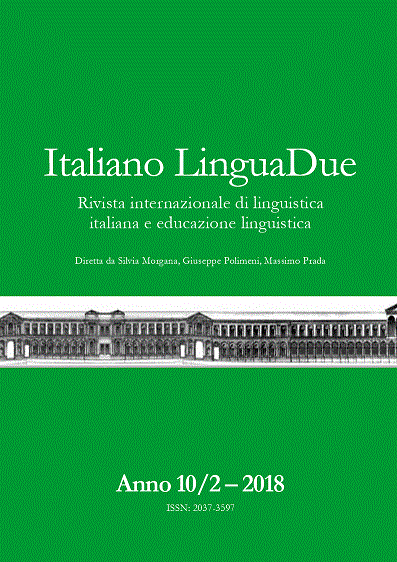LA MACCHINA INSEGNANTE E L’AMBIENTE VIRTUALE: UN BILANCIO DI UN SECOLO DI DIDATTICA DELLE LINGUE CON LE TIC E UNO SGUARDO AL FUTURO
DOI:
https://doi.org/10.13130/2037-3597/11292Abstract
Il rapporto tra l’uomo e la macchina nel campo della didattica delle lingue moderne si è evoluto, fin dai primi esperimenti meccanici dell’inizio del Novecento, nella convinzione che le macchine potessero fungere da insegnanti. Tale convinzione, che disumanizza il processo di apprendimento, si è alimentata nei decenni della fiducia nelle macchine, che oggi si è ulteriormente rafforzata grazie alle TIC. Proprio le TIC, però, ci offrono la possibilità di superare il paradigma della macchina insegnante, se ne sfruttiamo le potenzialità relazionali. Le e-mail, i blog, i social media consentono di costruire un ambiente virtuale, progettato (e valutato) dal docente ma autogestito dagli studenti, con prevedibili ricadute sulla motivazione e sulla percezione di autenticità del materiale studiato. Si tratta di una potenzialità non priva di controindicazioni e insidie, che, però, possono e devono essere risolte se si vuole attribuire alla tecnologia un ruolo davvero efficace, ma nello stesso tempo non invadente, nel processo di insegnamento/apprendimento delle lingue.
Teaching machines and the virtual environment: a survey of a century of language teaching with ICT and a look at the future
The relationship between man and machine in the field of teaching modern languages has evolved, starting from the first mechanical experiments of the early twentieth century, based on the belief that machines could be teachers. This conviction, which dehumanizes the learning process, has been fueled over the decades by the confidence in machines, which today has been further strengthened thanks to ICT. But ICTs, however, offer us the possibility to overcome the paradigm of the teacher machine, if we exploit its relational potentials. E-mails, blogs, social media allow us to build a virtual environment, designed (and evaluated) by the teacher and yet self-managed by the students, with predictable consequences on the motivation and perception of the authenticity of the material studied. It is a potential not without contraindications and pitfalls, which, however, can and must be resolved if we technology to have a truly effective, but at the same time non-invasive, role in the language teaching/learning process.




